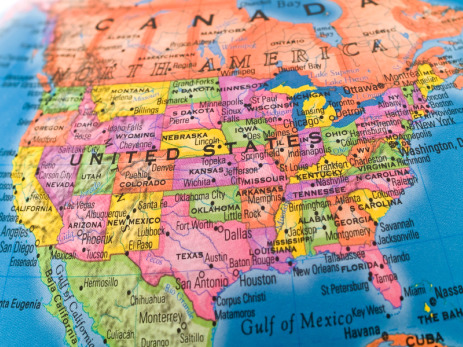I know everyone is supposed to be dour and disheartened about the prospects for climate policy right now. And while I can’t say that I’m thrilled with where we are, it’s useful to take stock of what’s happening because it’s not insignificant:
California: Next week, regulators are expected to approve a cap-and-trade program for the Golden State. It should be a slam dunk given that Proposition 23 — the oil company funded gutting of the state’s climate laws — got hammered at the ballot box. And now, new poll results from the Field Research Corp show that fully 64 percent of the California’s registered voters support cap-and-trade.
British Columbia: Provincial authorities are moving full speed ahead with a B.C. cap-and-trade program that will become operational on Jan. 1, 2012. The province will blend that program with the existing carbon tax, setting the state for B.C. to become the world leader in smart, comprehensive carbon pricing. (Matt Horne at the Pembina Institute has out a new thoughtful set of recommendations for the province’s carbon programs.)
New Mexico: Earlier this week, the state’s Environmental Improvement Board voted four-to-one in support of a carbon cap-and-trade program that will reduce state emissions by three percent annually from 2013 to 2020. That vote was a follow-up and backstop to a vote taken on election day that authorized New Mexico to join the Western Climate Initiative.
Western Climate Initiative: Despite setbacks in some key states like Oregon and Washington, the Western Climate Initiative (WCI) is plugging along. That’s thanks in large part to leadership in California, British Columbia, and New Mexico. Other WCI partners are also moving foward, including Manitoba (the province is seeking public consultation now on plans to implement a cap-and-trade program), as well as Ontario and Quebec.
Regional Greenhouse Gas Initiative: The 10-state regional program in the Northeast continues to operate an efficient and inexpensive carbon cap-and-trade program on the power sector that generates much-needed revenue for energy efficiency and weatherization (and, in a few cases, state budget shortfalls). Now that RGGI has proved carbon cap-and-trade works well, the next step is to begin ratcheting down the cap faster.
In the Northwest, however, the states that pride themselves on environmental leadership are still sitting on their hands. Washington’s leaders appear to be showing no interest in seeking legislative authority to join WCI’s cap-and-trade program. It’s the same story in Oregon, where returning Gov. John Kitzhaber (D) has a real opportunity to make a bipartisan case for moving the state forward. If Oregon moves, that would make Washington the sole West Coast laggard, which might well be enough to prompt further action in the Evergreen State.
It would be better for all — for industry, the public, and the climate — if North America had a single, coherent, and comprehensive carbon program. But even without a common climate currency, there’s every reason to believe that a patchwork of state and regional programs can make a real difference. And perhaps most importantly, local leadership exerts political force on the national leaders in Ottawa and D.C. who have so far shirked their responsibilities.
This post originally appeared at Sightline’s Daily Score blog.



